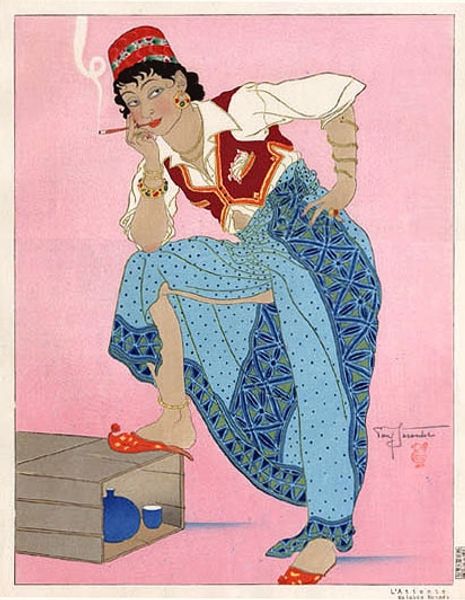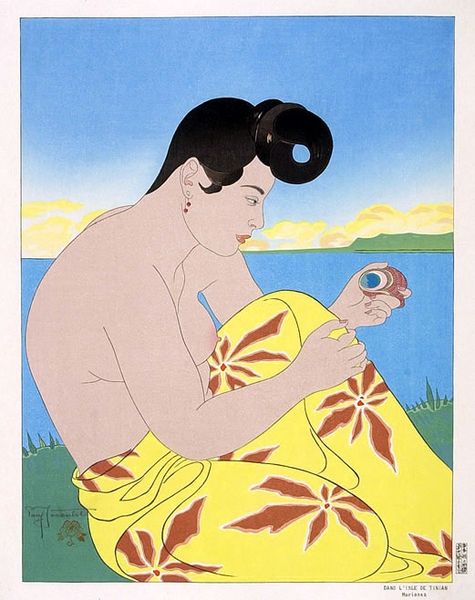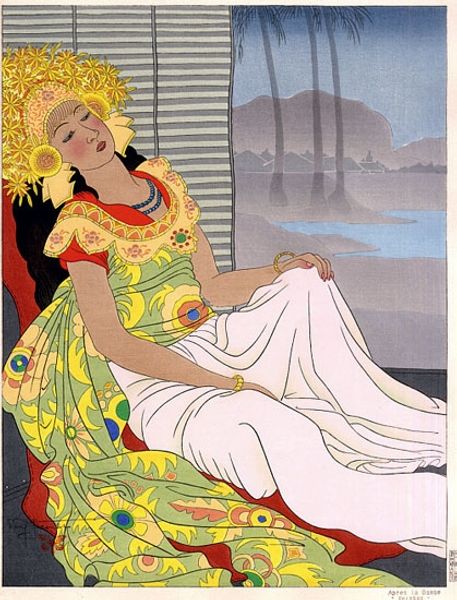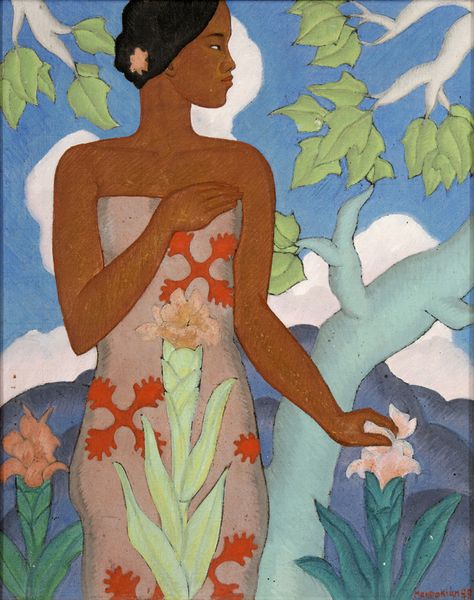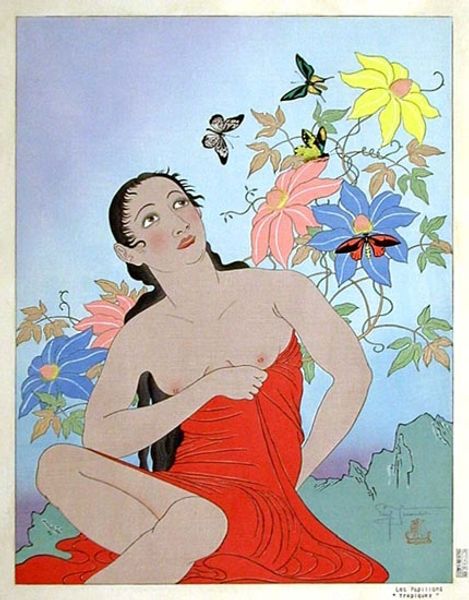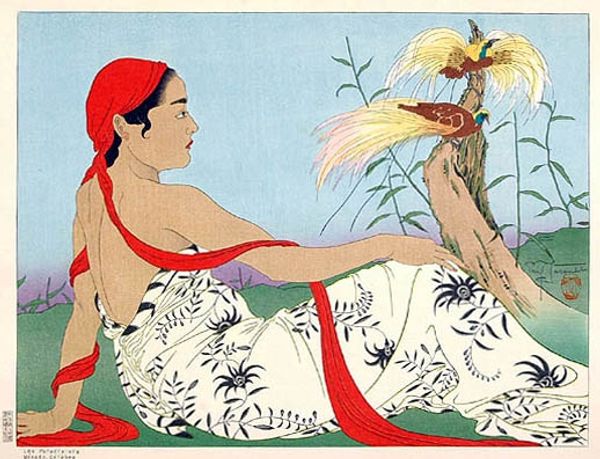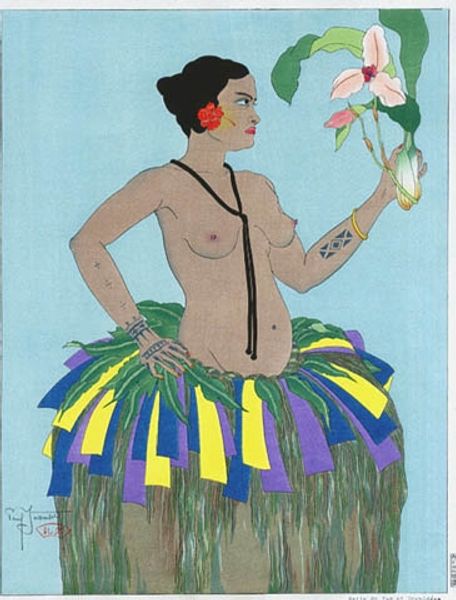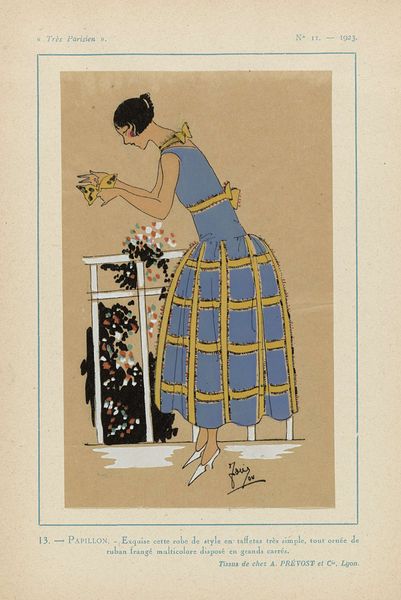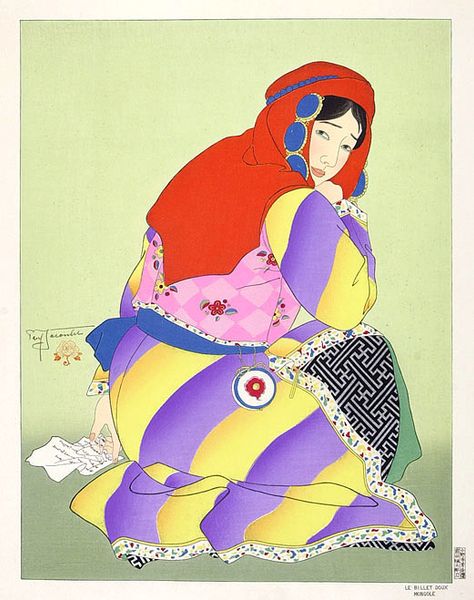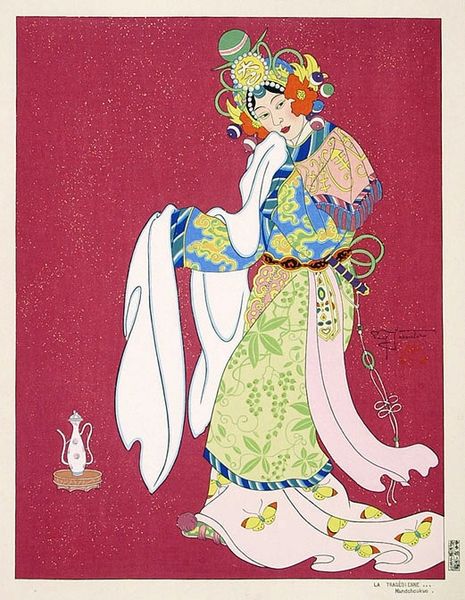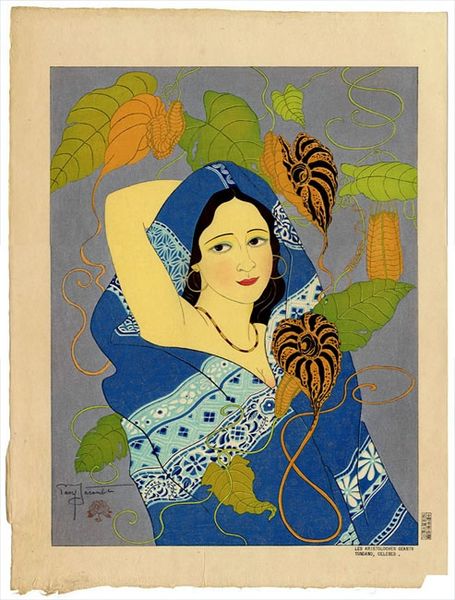
Copyright: Public domain Japan
Curator: Well, this is an interesting piece, wouldn't you say? Here we have Paul Jacoulet’s “La Gerbe D'Anthurium. Angur” created in 1951, a woodcut that really encapsulates the Japonisme movement, blended with a certain orientalist sensibility. Editor: Japonisme meets, like, a dreamy romance novel cover? I’m getting major lagoon vibes, a hidden love affair. It's all so soft, even the way she looks at you, over her shoulder. Like she has a secret. Curator: Right. And that supposed secrecy brings up a really key aspect: Jacoulet was deeply interested in portraying the cultures and people he encountered during his time in Asia. However, it's imperative to consider the potential problematic implications of a Western artist representing non-Western subjects. Does it verge on idealization? Othering, perhaps? Editor: Hmmm, "othering," that's a bit strong maybe? She seems strong and vibrant, I get her, you know. All those blues and pinks are so alive. Is it wrong to celebrate beauty and wonder through art even if you're "outside" looking in? Where's the line, ya know? I feel like it's more homage than condescension. But I could be missing something... Curator: That tension is central, isn't it? Considering the gaze. Jacoulet presents an idealized version, informed by Western aesthetic preferences but executed in the *ukiyo-e* style. And this isn't merely a neutral cultural exchange, it occurs within complex power dynamics. Whose story gets told? Whose is muted or erased? The Anthurium flowers themselves might even be construed as exotic objects. Editor: Okay, okay I can get with that, flowers and all as symbolism for "otherness". But they're pretty exotic! Haha! I still feel it’s meant kindly...Maybe because Jacoulet studied his style FROM Japanese artists, like his mentors Onchi Koshiro and Hiratsuka Unichi? Curator: It's about layers of representation and power. Understanding how art can unintentionally perpetuate inequalities through its portrayal of "othered" individuals and cultures is incredibly crucial. These works invite critical reflection on colonial histories and power structures. Editor: See, art just makes you think! It hits you in the heartstrings and gets your mind going. All this deep thinking about an image... It changes how you experience life, I'm sure of it. Curator: Precisely. Art challenges us to see differently. And with the historical context laid out, hopefully more clearly.
Comments
No comments
Be the first to comment and join the conversation on the ultimate creative platform.
